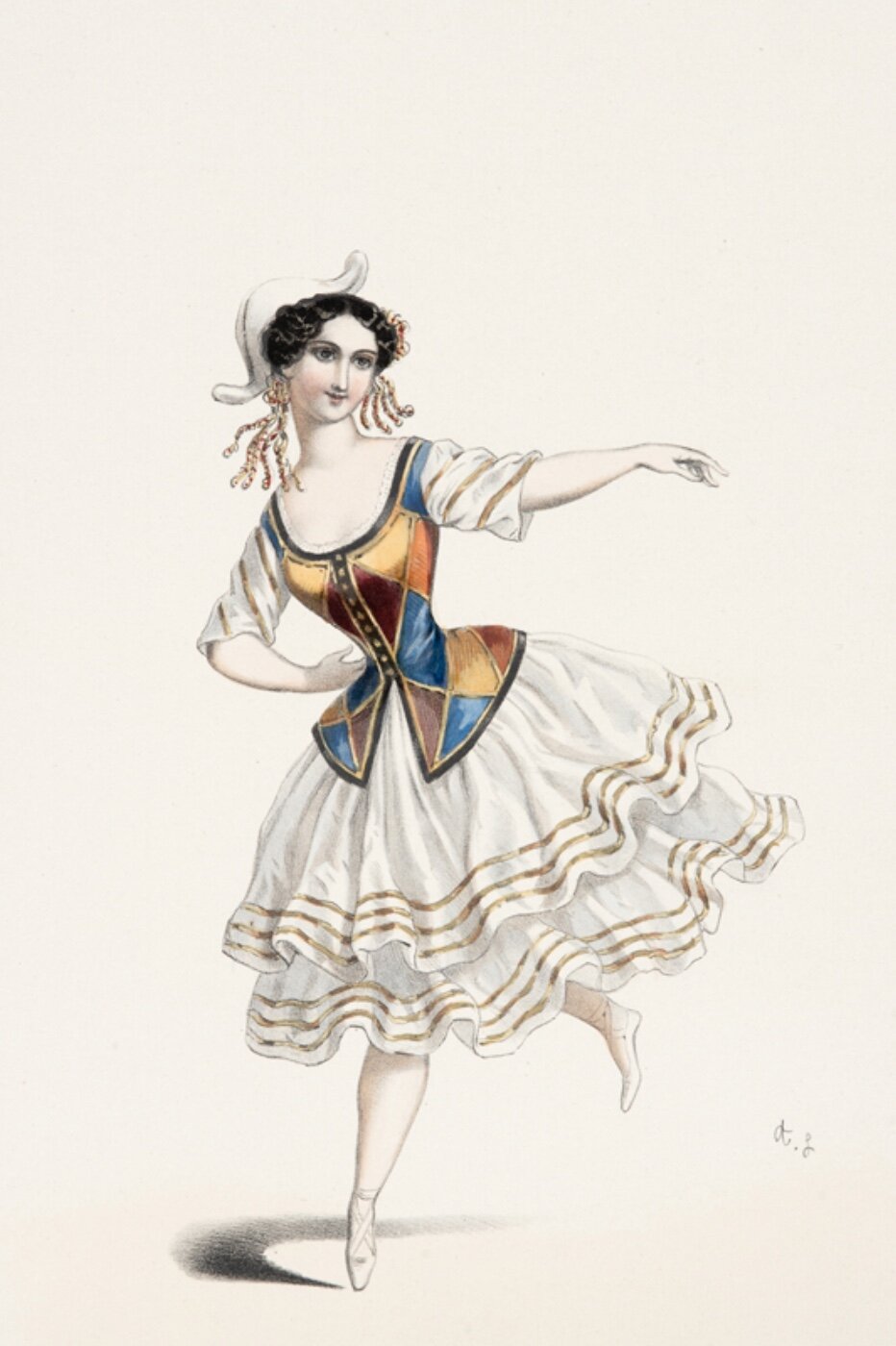The Paris ballet teacher Madame Dominique: Women’s History Month in Dance, 2021
Women’s History Month in Dance 3; 4; 5. The late Ivor Guest, master historian of the Paris Opéra, spoke of writing a monograph or biography of the ballet teacher known as Madame Dominique. As far as I know, he never did. Too bad: I was proud to be able to tell him one thing about her he hadn’t known, but it goes without saying that he would have written much that the rest of us did not know.
The prime place that Madame Dominique (1820-1885) has in ballet history is as the teacher of the ballerinas Emma Livry (1842-1863) and Giuseppina Bozzacchi (1853-1870), two of the short-lived legends of the ballet of the French Second Empire. Livry created the role of Farfalla in the Offenbach-Taglioni ballet “Le Papillon” (1860) at age eighteen; Bozzacchi created the role of Swanilda in the Delibes- Saint-Léon ballet “Coppélia” (1870) at the age of sixteen. Both these prodigies were discovered, in Paris, in the class of Madame Dominique, also known as Madame Dominique-Venettoza. Livry was considered to be the reincarnation of the Romantic style of Marie Taglioni, who was brought to watch her dance “La Sylphide” and went on to choreograph “Le Papillon” for her. Such was Dominique’s reputation that, although this was an age of Italian virtuosi, the young Bozzacchi had come from Milan to study with her. When the ballerina Adele Grantzow fell ill during the preparation of the ballet “Coppélia”, the choreographer Arthur Saint-Léon and the Opéra director Émile Perrin even commissioned the composer Léo Delibes to look out for a suitable candidate in Italy when he was travelling there - but he returned empty-handed. They then found the Italian of their dreams in Dominique’s class: Bozzacchi.
In between these two star pupils, Dominique earned another, quieter place in history by creating the mute role of the Comtesse d’Aremberg in the world premiere of Giuseppe Verdi’s great opera “Don Carlos” (1867). When the Comtesse is banished to her native France by king Philippe II of Spain for having apparently neglected her duty as chaperone to to his wife, queen Élisabeth, she, the Comtesse, weeps, whereupon the queen consoles her in the beautifully tender and poignant aria “Oh ma chère compagne”. (This was the fact I was proud to tell Ivor Guest.)
Earlier in her career, Mme Dominique had been the dancer Caroline Lassiat. We have a photograph (3) of her dancing with Louis Mérante, the premier danseur who became more celebrated as the original choreographer of Delibes’s “Sylvia” as well as of André Messager’s “Les Deux Pigeons”. Degas painted Mérante in his 1872 “Foyer de danse”; we may assume that many of the danseuses in the painting had also studied with Dominique.
Lassiat had entered the Paris Opéra at age ten in 1830; she rose to the rank of soloist. She m would have seen all the most renowned ballerinas of the day - Marie Taglioni , Fanny Elssler, Lucile Grahn, Carlotta Grisi, Fanny Cerrito. We have two prints of Lassiat dancing, drawn and hand-coloured, c.1852, by Alexandre Lacouchie. In 4, she is Columbine; in 5, she is in Joseph Mazilier’s “Orfa”. But it was as teacher that she subsequently achieved greatest renown. Although her pupils Livry and Bozzacchi died young (Livry of burns, Bozzacchi of smallpox, fever, and starvation during the Prussian Siege of Paris), another of her students, the Italian Rita Sangalli (1849-1909) spent twelve highly successful years (1871-1884) with the Paris Opéra, creating the title roles of “Sylvia” and Edouard Lalo’s “Namouna” (1882).
We can imagine that a good biography of Mme Dominique would also be a history of the Paris Opera, of the evolution of French ballet style over fifty years (Taglioni to Sangalli), and of Paris between the times of Delacroix and Degas, of Auber and Rossini to Delibes and Lalo, from the 1830 revolution of the Three Glorious Days to (after the Franco-Prussian War) the Third Republic. I want to read such an account.
#women’shistoryindance
Friday 5 March
3: Madame Dominique-Venettozo (Caroline Lassiat) and Louis Mérante
4: Caroline Lassiat (Mme Dominique) as Columbine, c.1852
5: Caroline Lassiat (Madame Dominique) in Joseph Mazilier’s “Orfa”, 1852.


